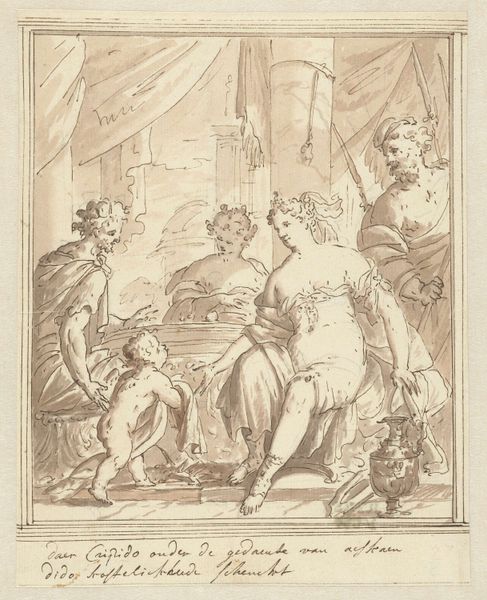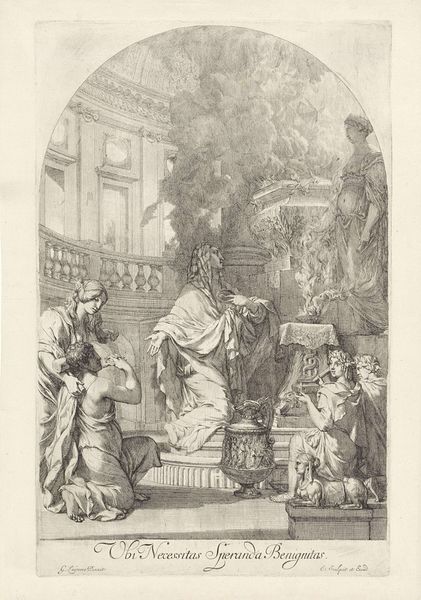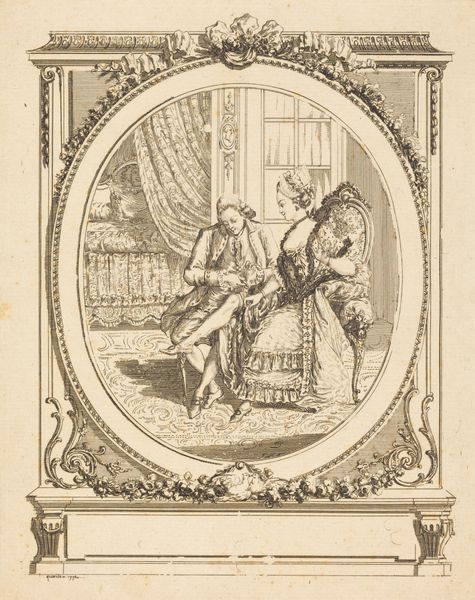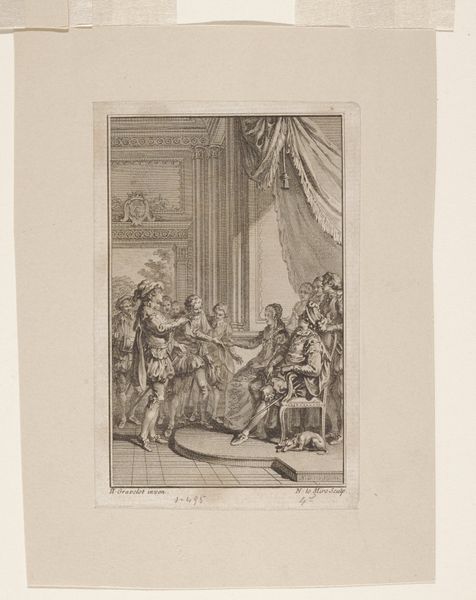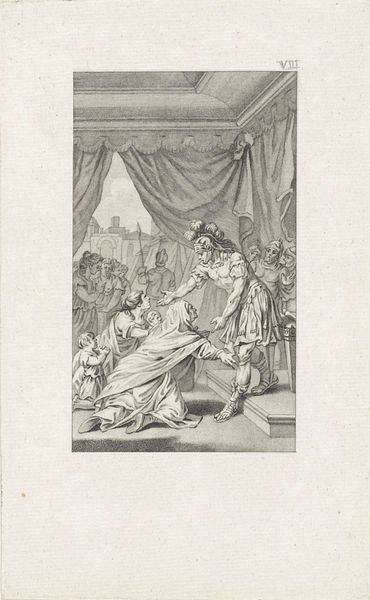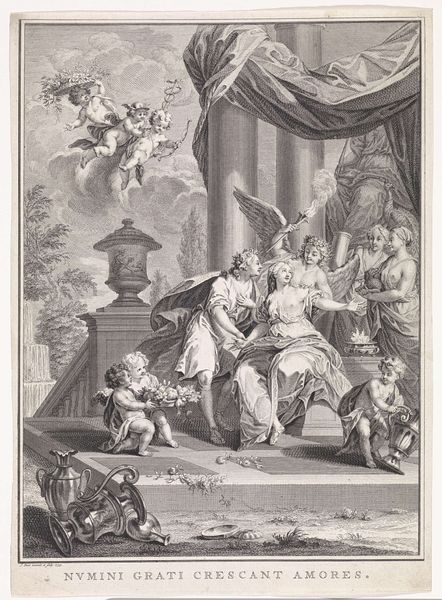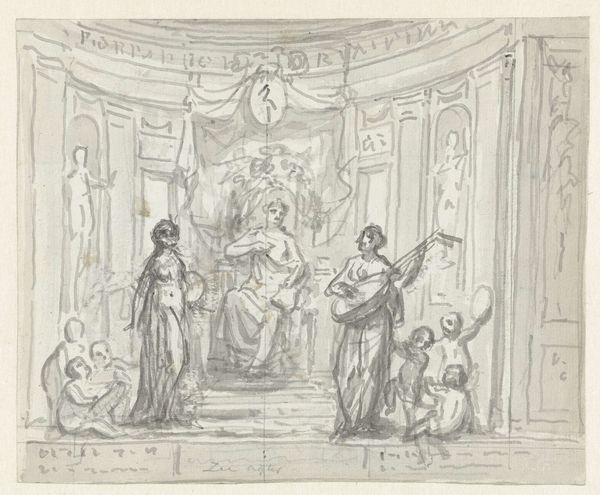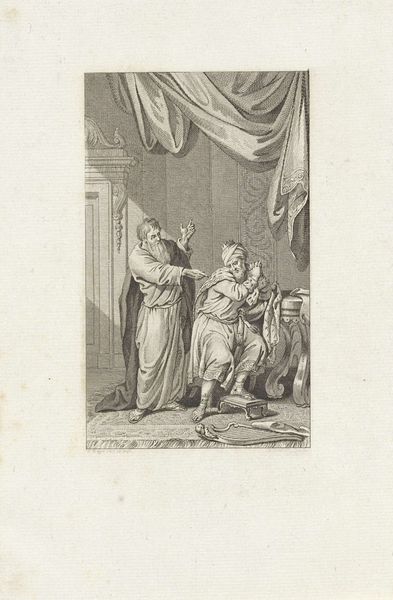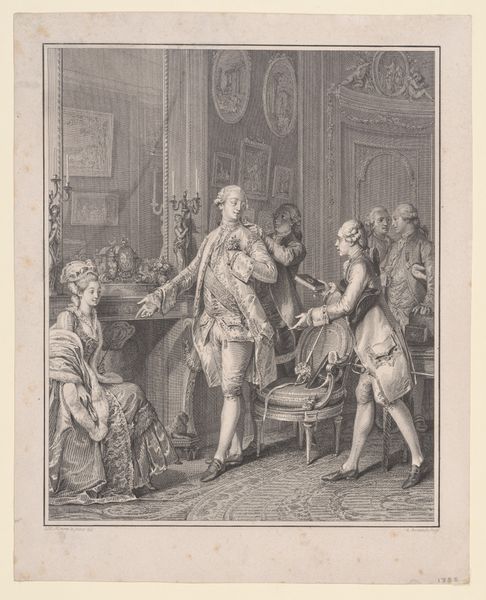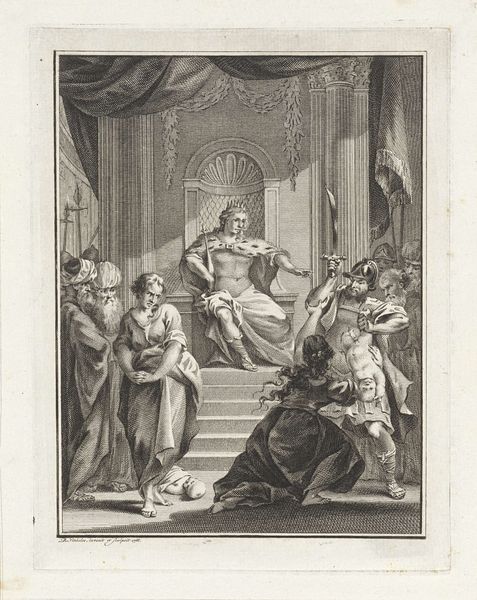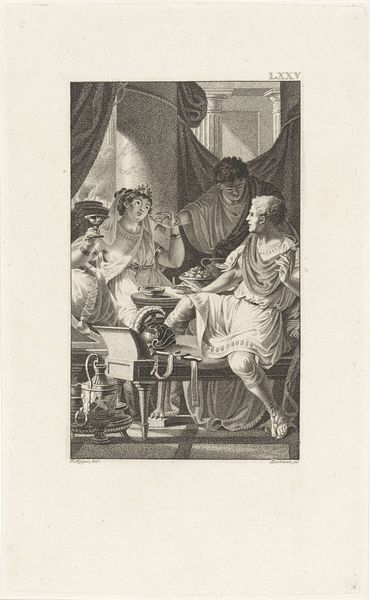
Historische scène met interieur met drie personen 1782 - 1837
0:00
0:00
drawing, ink, pen
#
portrait
#
drawing
#
narrative-art
#
pen illustration
#
figuration
#
ink
#
line
#
pen
#
genre-painting
#
history-painting
#
academic-art
Dimensions: height 216 mm, width 155 mm
Copyright: Rijks Museum: Open Domain
Editor: This pen and ink drawing is called "Historische scène met interieur met drie personen," which translates to "Historical scene with interior and three people" by Pieter Bartholomeusz. Barbiers, created sometime between 1782 and 1837. I find the scene rather theatrical and full of subtle tensions, but I wonder how it spoke to its original audience. How do you interpret this work within its historical context? Curator: I see this drawing as a window into the construction of historical narratives during a time of immense social upheaval. Notice the setting—an idealized past, evoked through costumes and interior. But for whom is this past idealized, and whose stories are being told? The very act of depicting a "historical scene" implies a certain perspective, a desire to legitimize a particular version of events. How might this image reflect the political anxieties or aspirations of the artist's contemporaries? Editor: So you are saying that what appears to be a straightforward historical depiction might be subtly pushing a political agenda? Curator: Precisely. And consider who is absent from this image. Where are the working classes, the marginalized communities who were also part of this history? By focusing solely on this seemingly elite scene, Barbiers participates in a selective storytelling that privileges certain voices over others. What can we learn from those absences? Editor: That's a powerful point. It forces me to question the narrative I initially accepted. I now see it as not just a historical scene, but an argument about history itself. Curator: Exactly! Thinking about art like this encourages us to analyze the power structures embedded within artistic representations. How can we challenge those structures today? Editor: I’ll definitely be more critical of seemingly neutral historical portrayals going forward. Thanks for expanding my perspective. Curator: And thank you for your insightful observations! Art history is a continuous conversation, and your questions help us to keep interrogating the past in the present.
Comments
No comments
Be the first to comment and join the conversation on the ultimate creative platform.
